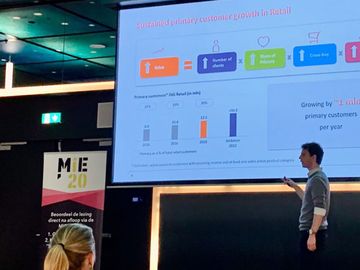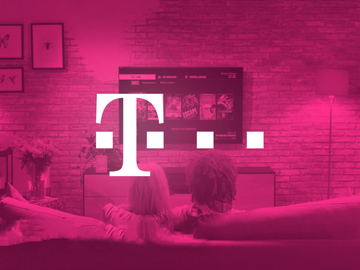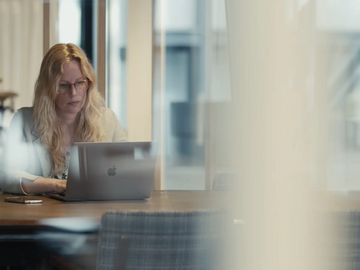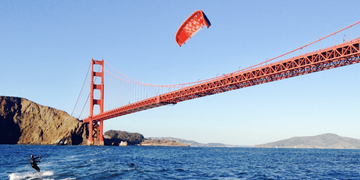
10 years of WUA: My top 10 entrepreneurial lessons
In January 2008, my brother Henk and I established WUA with one goal in mind: create a fantastic company that embodies the philosophy “first who, then what”. Or in other words: set up a company with an awesome (family) culture where people can be as they are. We got our inspiration for the “first who, then what” approach from the book Good to Great and took it so literally that we came up with the workplace philosophy, the name WUA, the logo, and everything around it before we even had a product.
We had the “who”, but we didn’t have the “what”. All we knew was that the product had to do with digital conversion optimization and that it if we put everything into it, we could become number 1 in the global market. Following a year of sifting through business ideas with a coach from my MBA, we finally came to a decision.
The most important goal I have is to inspire, to connect, and to do business within a family culture. This goes far beyond making sales or making a profit. What I want is to live and live dream together, and to add to our society. A whole decade has passed since we first set up WUA, and I’ve come to learn quite a few things in that time. With that in mind, I want to share with you my 10 most important lessons after 10 years of WUA.
1. Always live your passion
Do not let anything or anyone stop you from living your passion. You are the best person for everyone if you live your passion (especially for yourself!). For me, it is a conscious decision to always do this and to strive by this, even in the moments where life doesn’t seem to be going my way. From the beginning of WUA, we have always pursued everything with a contagious passion that invigorates everyone involved. We started a company that goes for the best life, for ourselves and for the people around us. Without passion, none of this would be possible.
2. You are responsible for your own energy and health
Build your own discipline in this area, no matter how challenging building a business or life can be. It’s a must! I believe that you should always make your own health your top priority. If you can take good care of yourself, you can take good care of your family, team, customers and suppliers. Then you can always meet the challenges that come your way.
I practice a lot of yoga, kite surfing and meditation. This helps me build discipline while boosting my response ability (the way I handle whatever comes my way). It makes me feel at-home with myself, and gives me the peace and the space to see the important things that I should be dedicating my time to. Not to mention it’s great fun!
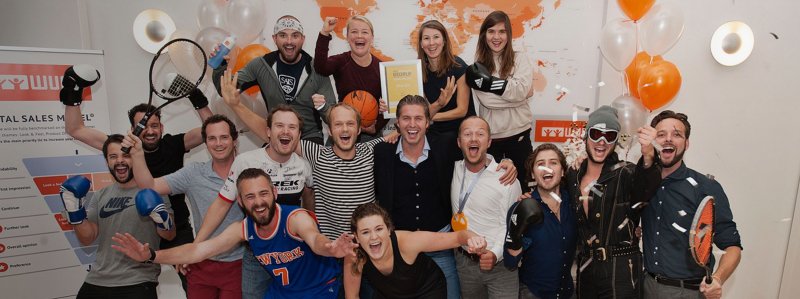
The WUA team together with Pieter van de Hoogeband after winning the award for Most Healthy Company in Amsterdam.
Vitality is everything, and we always communicate this idea within WUA. That’s probably what led us to winning the award for Most Healthy Company in Amsterdam, which was given to us by Olympic champion Pieter van den Hoogenband.
3. Make a BHAG for yourself
Where do you want to be in 7 years? What really gets you going? What seems impossible but is actually possible if you put in everything you have? Asking yourself these questions will help you realize your BHAG—your Big Hairy Audacious Goal. Our BHAG since the moment we started WUA was to become the best in the world with one thing. We do this with laser focus. If we encounter a speedbump or an obstacle, we get over it with focus, focus, focus. We have been doing this for 10 years in 16 countries and we’ll continue to do this for the next 10 years. Off we go to the best and largest Digital Experience Benchmark in 80 countries!
Also read: 100 lessons from Tony Robbins’ Business Mastery
4. The question is not “how?” The question is: “who?”
Very often I’ve wondered to myself: how am I going to do this? How? The truth is that for every challenge a company has there is a specialist available in the market. If you need to build a brick wall, you ask a bricklayer. If you want to program an app, you ask a good app programmer. That’s how it goes with sales, marketing, finance, legal, administration, cleaning, and so and so forth. You never have to reinvent the wheel yourself. Being caught up on the question “how?” in a certain field that isn’t your own only brings frustration. You’re simply not the specialist in every field, and that’s ok. If you always try to be the specialist, it will take valuable attention away from your team, your clients, and your own energy and health.
5. Are you building a wall or a castle?
Or in other words, what is your vision? Building a business goes by stone by stone. Step by step. Most people overestimate what they can do in 1 year and underestimate what they can accomplish in 10 years. When you have one central and clear focus, you and your team can truly come together to build a castle. Of course, this doesn’t just happen in 1 or 2 years’ time. Building a castle takes time, and the danger with almost reaching it is that you want to go build more castles. Before you know it you are busy constructing different walls (businesses) and little margin is being made. This all costs a lot of energy since your attention is diverted towards different things.
My choice is to focus on one thing and build a beautiful castle out of that. Together with fantastic people that work together as a family, I want to continuously innovate and deliver extremely high value to customers. Just like our team in Amsterdam, I want to create different “cells” of the WUA culture in many different countries that have their roots in the headquarters that sit beside the Herengracht. At the moment we have four of these cells (USA, UK, NL and Germany) and the directors of each have spent a minimum of 6 months in Amsterdam with us to learn the WUA way. Two more cells are set to come in 2018.
6. Your customers are by far the most important investor
You read that correctly. I believe in extreme focus on customers. Be involved with the customers. Be attentive to them. Let them be a part of building your castle. They are an incredibly important part of the whole process–how cool is that! By focusing on your ideal clients, you can build a product that suits their needs and optimizes customer satisfaction. If you know how to sell in advance, there will be a real market for you to explore. Many entrepreneurs start by selling shares to investors before they start selling to customers. In my eyes start selling directly to customers. They are the best investors. And as you do this you will find the way to innovate and serve more customers with all the passion, perseverance, and fun that comes with that.
7. There is always a way
ALWAYS. See the end result and live in the visualization as if it has already been accomplished. Then you will find the way. Have faith in what you’re doing and dare to do it. Almost every day I visualize my main 3 objectives, big or small, for 10-15 minutes. I often use guided meditation/visualization from Tony Robbins. This consists of a short breathing exercise, a session of gratitude for “what is” and visualization of the three goals I most want to complete for the day. From here I continue onward with a mindset directed towards where I want to go. I believe that by doing this, you can actually see what the end result looks like and you will see (with graze) the way you have to walk.
8. Get out of the office
Since September 2016 I haven’t had a desk or office within our building on the Herengracht. It’s an important lesson I learned from Richard Branson. By having someone else lead within the office, I can be outside the office and stay focused on building the castle. Instead of being absorbed in the daily routine, I can structurally add value to the customer and the team from an outside perspective.
I believe when I talk to the people in my team now, I can really speak to them with all the attention that I can give at that very moment. In practice, this also means I always have my laptop and sportswear in my backpack and my kite-surfing set ready in the car. There’s always much happening in the office and it all feels important, but by being outside of it, I can work on clearing up my schedule as much as possible so that there’s optimal room for creativity, opportunities and deep conversations with (potential) employees, customers or suppliers.
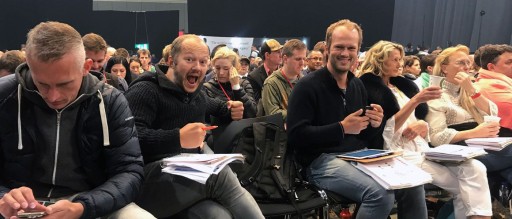
My brother Henk and I attending a Tony Robbins live event for business mastery.
9. First who, then what
When looking for the right people for our team, the first question is whether this person fits with us? Will they work harmoniously in our (family) culture? From there we see whether that person can fulfill their role and could potentially grow to fill other roles. The characters of people do not change quickly, but roles change faster and faster. Since that’s the case, it’s best to take people in whose personality fit within the organization and its core values. For me, what’s most important is how a person’s energy fits within the organization. I want to see whether someone is really open to life and personal growth—the “will” to grow is essential. Quite often I start conversations with the topics vitality and meditation. Why? To see how a person reacts to it. Even if they’re not too familiar with these things, are they interested in what I have to say? Is their reaction genuinely curious or judgmental? If we want to make WUA a global company, we’re going to come across many differences and cultures. And I believe enjoying these global differences is a beautiful part of building an international company.
10. Live within a Beautiful State
Perhaps this is the most important lesson. What are we all striving for? To an emotion that lets us feel good in the here and now? Can we call success a positive emotion? Or is it simply temporary? As I mentioned in lesson 2, what’s become most important is living in a way in which I feel at-home with myself. Beyond that, it’s about creating a long-standing atmosphere within the organization where everyone feels safe, as if they are in their own home. In other words, to live in a “Beautiful State.” And yes, that’s easier said than done. Life is not particularly perfect. If we try to pretend life is a perfect picture, we only create lies, pains, and frustration within ourselves.
We all want “perfection.” There is only too often a discrepancy between the perfect “picture” and “reality.” That’s where frustration comes from. But the moment you realize that not everything has to be perfect is the moment frustration vanishes like snow in the sun. For me, meditation plays a key role in helping me remember this. It’s not about the focus on perfection, or the result or success. It is precisely the focus on continuously improving in small steps and to work with a long-term goal in mind. It’s about enjoying the progress. When you trust in what you do, you can 100% focus on progress and achieve the maximum result that is possible in that moment.
On to the next 10 years!
These were my most important 10 lessons of the last 10 years. I hope they brought inspiration to you. I’m so grateful for all the beautiful people around me, both physically or remotely. It’s been an incredible adventure, with many highs and lows. On to the next 10 years!
If you have any questions or comments, don’t hesitate to reach out to me at [email protected].
